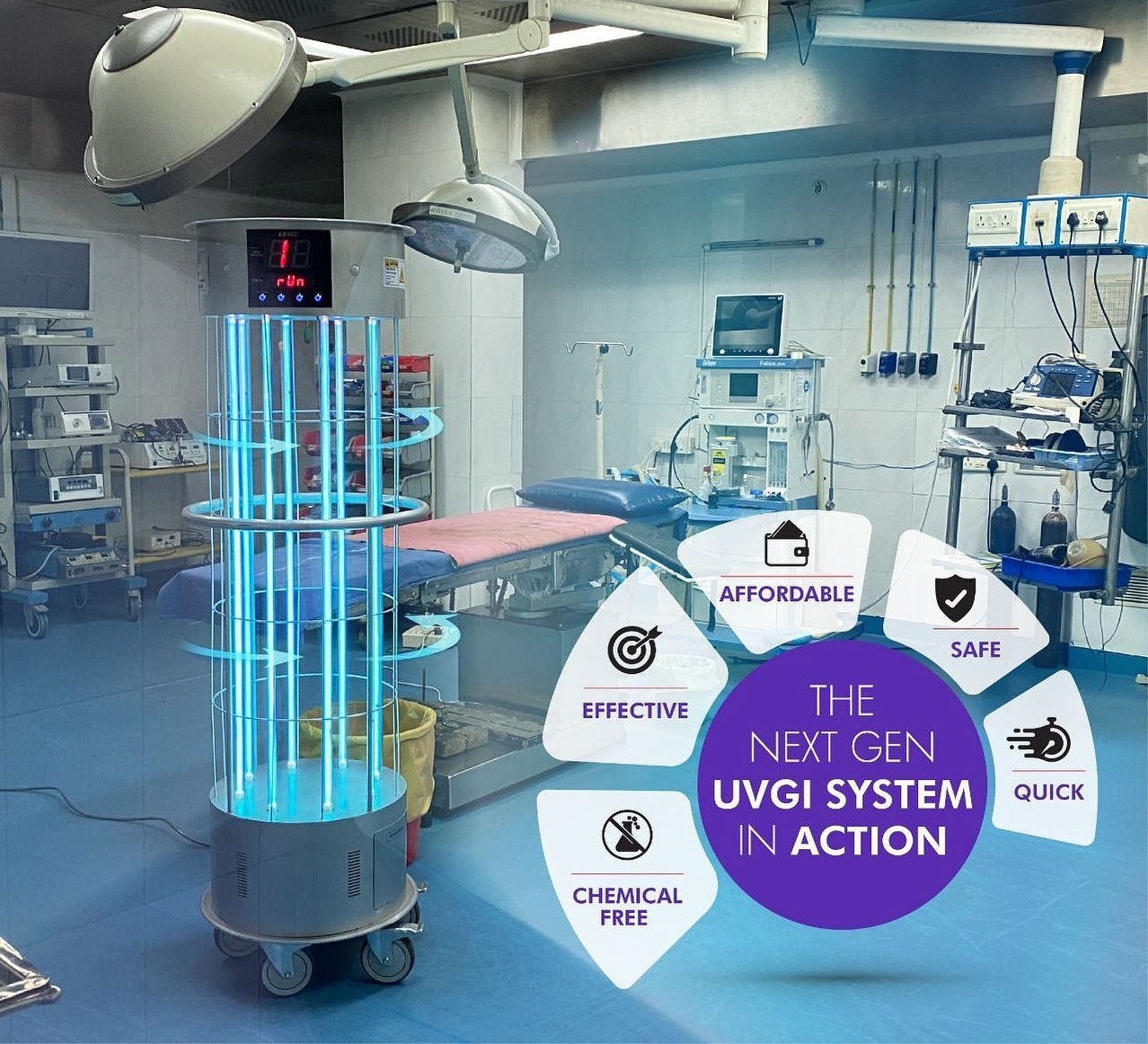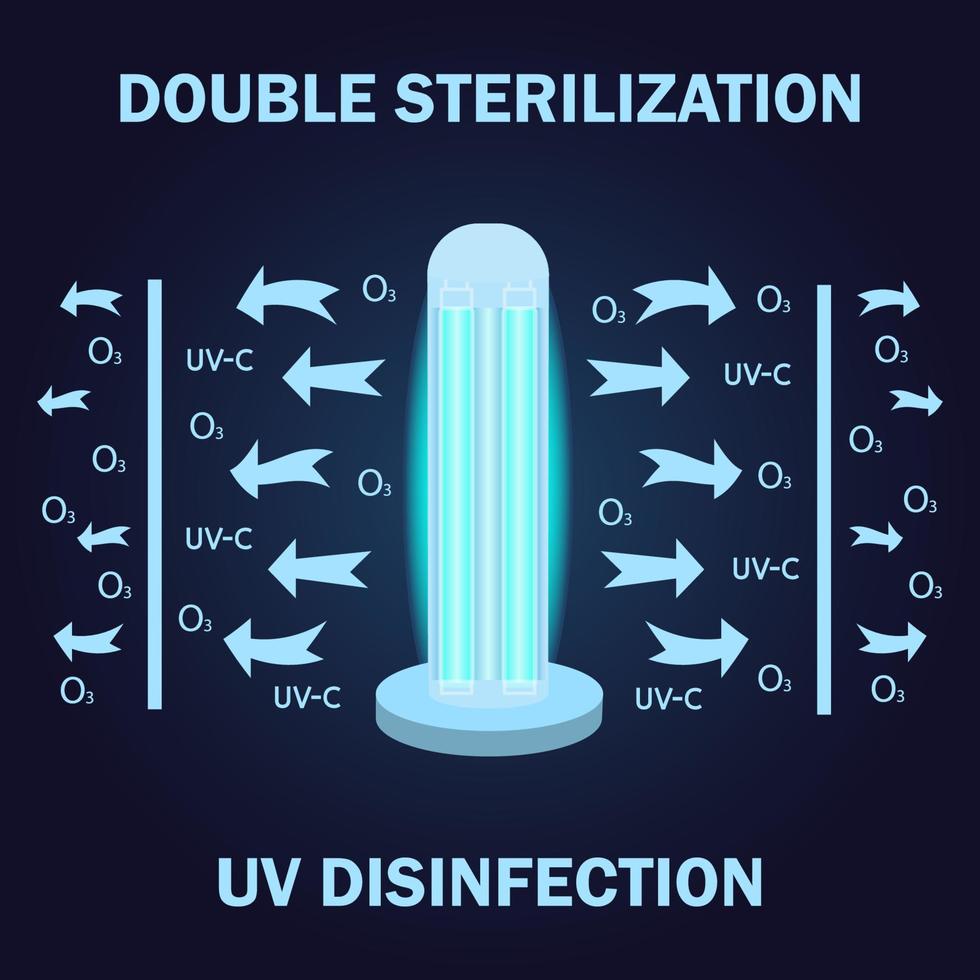Far-UVC UV Sanitizers: Revolutionizing Cleanliness Criteria for a Safer Atmosphere
Wiki Article
Much UVC Light: A Game-Changer in the Fight Against Airborne Pathogens
In the ever-evolving battle against air-borne microorganisms, the appearance of much UVC light has actually triggered substantial passion and possibility. What exactly is much UVC light, and how does it function?The Science Behind Far UVC Light
The scientific principles underlying using Far UVC light as a potential remedy for combating air-borne microorganisms are both appealing and complex. Far UVC light refers to a specific variety of ultraviolet (UV) light wavelengths, normally in between 207 and 222 nanometers, which have been discovered to properly kill or inactivate bacteria such as infections and microorganisms. Unlike conventional UVC light, which has a shorter wavelength and is understood for its germicidal homes however can additionally damage human skin and eyes, Far UVC light has been revealed to be secure for human direct exposure.The vital mechanism behind the performance of Far UVC light lies in its capability to permeate and ruin the genetic material of microorganisms, including their DNA and RNA. When revealed to Far UVC light, the hereditary product undertakes a procedure called photodimerization, where surrounding bases in the DNA or RNA particle bind with each other, preventing replication and rendering the microbe incapable to cause or replicate infection.

Exactly How Much UVC Light Works
Far UVC light runs by using specific ultraviolet wavelengths to properly reduce the effects of microorganisms and stop their duplication, making it an encouraging service for combating air-borne microorganisms. Unlike standard UVC light, which is unsafe to human skin and eyes, much UVC light has shorter wavelengths, generally in the variety of 207 to 222 nanometers (nm), that do not permeate the external layer of the skin or the tear layer of the eye. This makes it risk-free for continual human exposure, while still being dangerous to germs and viruses.The efficiency of far UVC light hinge on its ability to pass through and ruin the DNA and RNA of microbes. When subjected to far UVC light, the hereditary material of these virus is harmed, rendering them incapable to replicate and infect cells. In addition, research studies have actually shown that far UVC light can properly inactivate air-borne viruses, such as influenza, measles, and coronaviruses, consisting of SARS-CoV-2, the infection in charge of COVID-19.
Additionally, much UVC light is likewise with the ability of disinfecting surfaces and things in an encased space. By installing far UVC lights or making use of mobile far UVC light devices, it is possible to continually disinfect the air and surface areas, minimizing the threat of air-borne transmission of pathogens.
Advantages of Far UVC Light
Using far UVC light deals a variety of significant benefits in combating airborne virus and making certain a much safer atmosphere for constant human direct exposure. Among the crucial advantages of far UVC light is its capacity to effectively neutralize numerous kinds of damaging bacteria, viruses, and fungis without triggering injury to people. Unlike standard UV light, which can be dangerous to human skin and eyes, far UVC light has a much shorter wavelength that permits it to target and ruin pathogens while posing very little risk to human health and wellness.
In addition, far UVC light is much safer for the atmosphere contrasted to traditional disinfection techniques. Chemical anti-bacterials often consist of unsafe ingredients that can have unfavorable influence on the setting. Much UVC light, on the various other hand, does not produce any type of unsafe byproducts or residues, making it a more eco-friendly and sustainable service.
Applications of Far UVC Light
Far UVC light has actually shown to be effective in removing airborne virus such as germs, fungi, and viruses. Unlike conventional UV light, much UVC light is safe for human direct exposure, making it suitable for constant usage in public areas such as schools, health centers, and offices.One more application of much UVC light remains in the medical care sector. It can be utilized to decontaminate health center rooms, operating movie theaters, and clinical tools, minimizing the threat of healthcare-associated infections. Additionally, far UVC light can be integrated right into HVAC systems to purify the air distributing in structures, providing an added layer of security versus air-borne virus.
Additionally, far UVC light can be used in the food sector to stop foodborne diseases. It can be utilized to sanitize food processing facilities, web killing germs and other bacteria that may pollute food items.
Future Effects of Far UVC Light
The possible future applications of much UVC light are huge and hold pledge for numerous markets and industries. One of the essential areas where far UVC light can have a significant influence remains in health care settings. Facilities and healthcare facilities could utilize much UVC light to decontaminate individual spaces, operating theaters, and waiting locations, lowering the threat of healthcare-associated infections - far-uvc. This can possibly result in improved patient end results and minimized health care expenses.In addition, using far UVC light in public rooms such as flight terminals, train stations, and mall might help regulate the spread of airborne this content virus. By constantly disinfecting these locations, the risk of transmission might be substantially decreased, giving a much safer setting for individuals.
An additional potential application of much UVC light is in the food sector. Far UVC light might be used to decontaminate cooking surface areas, packaging materials, and storage locations. This could assist prevent the contamination of food and minimize the occurrence of foodborne health problems.
Additionally, far UVC light can be made use of in cooling and heating systems to decontaminate the air flowing in buildings. This can be particularly valuable in congested rooms such as cinemas, schools, and workplaces, where the threat of airborne transmission is higher.
Final Thought
In final thought, far UVC light has emerged as a game-changer in the battle versus air-borne virus. From public rooms to medical care setups, much UVC light offers various benefits in decreasing the transmission of diseases.
Far UVC light refers to a particular range of ultraviolet (UV) light wavelengths, usually between 207 and 222 nanometers, which have been found to effectively eliminate or suspend bacteria such as microorganisms and infections. far-uvc. Unlike standard UVC light, which has a much shorter wavelength and is known for its germicidal residential or commercial properties but can also harm human skin and eyes, Far UVC light has actually been shown to be safe for human direct exposure
Unlike standard UVC light, which is dangerous to human skin and eyes, far UVC light has much shorter wavelengths, commonly in the variety of 207 to 222 nanometers (nm), that do not permeate the outer layer of the skin or the tear layer of important link the eye. Unlike standard UV light, which can be dangerous to human skin and eyes, far UVC light has a much shorter wavelength that enables it to target and destroy virus while presenting marginal risk to human health.
Unlike conventional UV light, much UVC light is risk-free for human direct exposure, making it appropriate for continuous use in public spaces such as health centers, offices, and colleges.
Report this wiki page